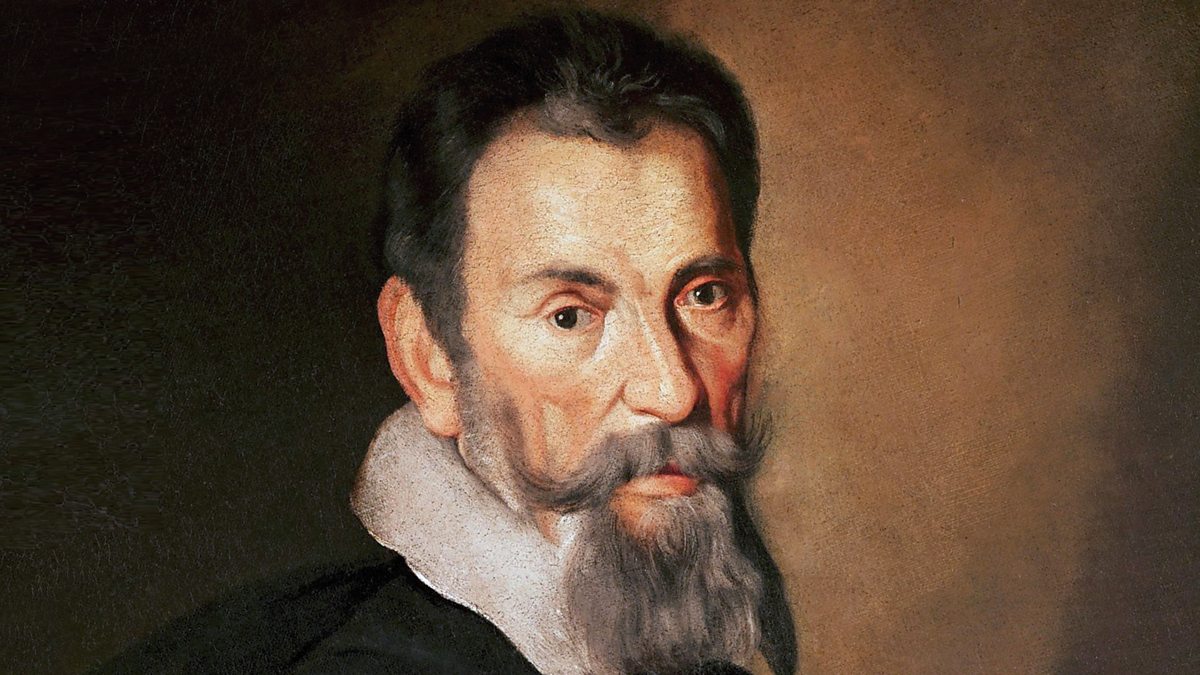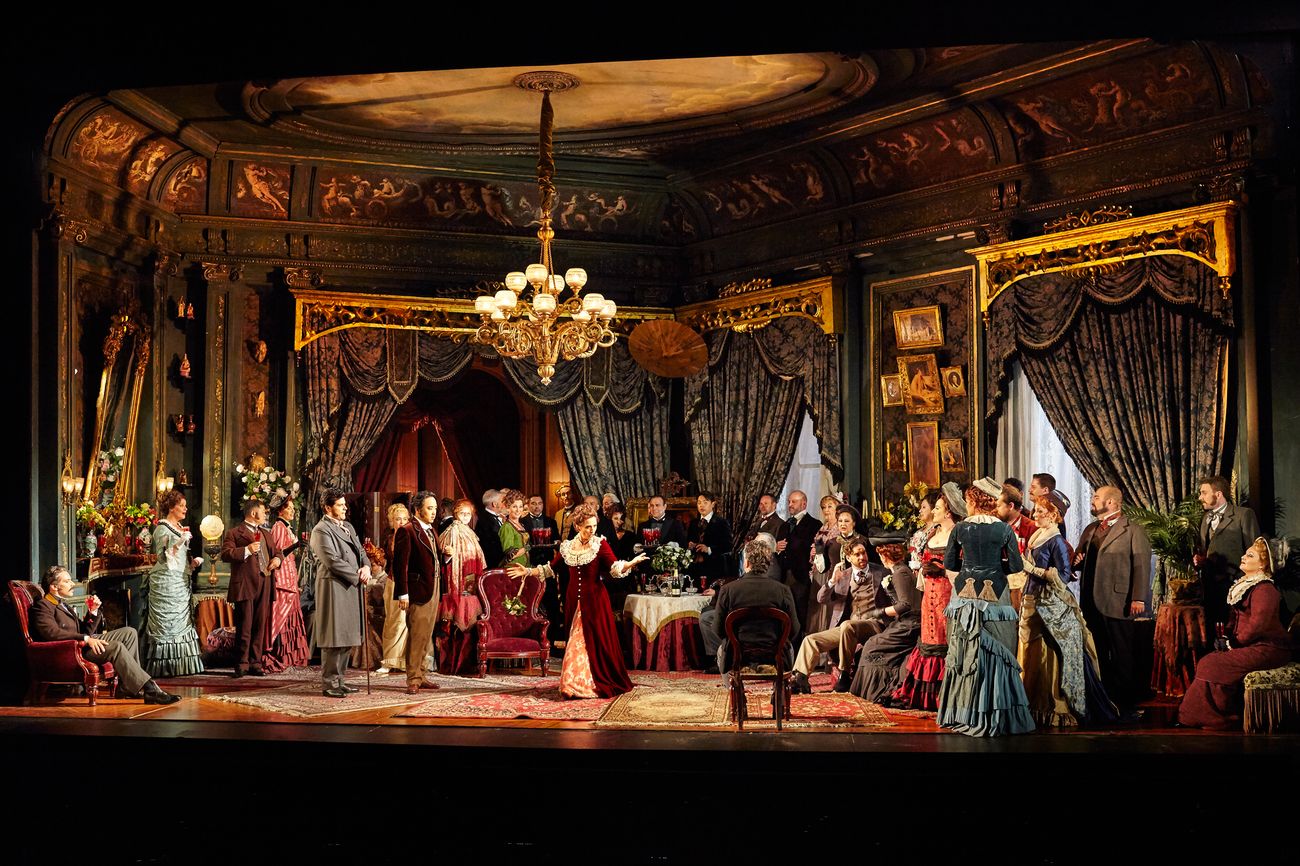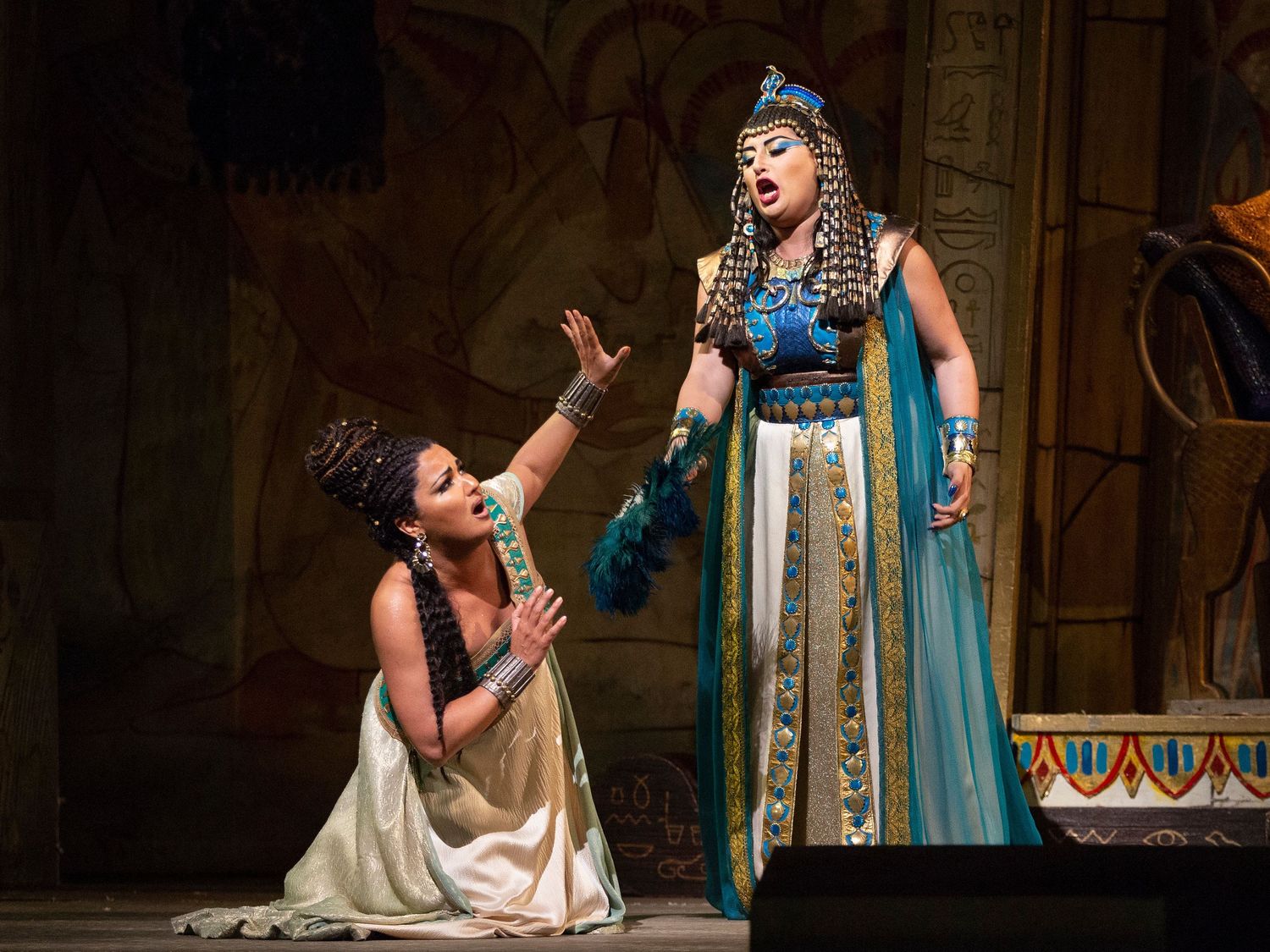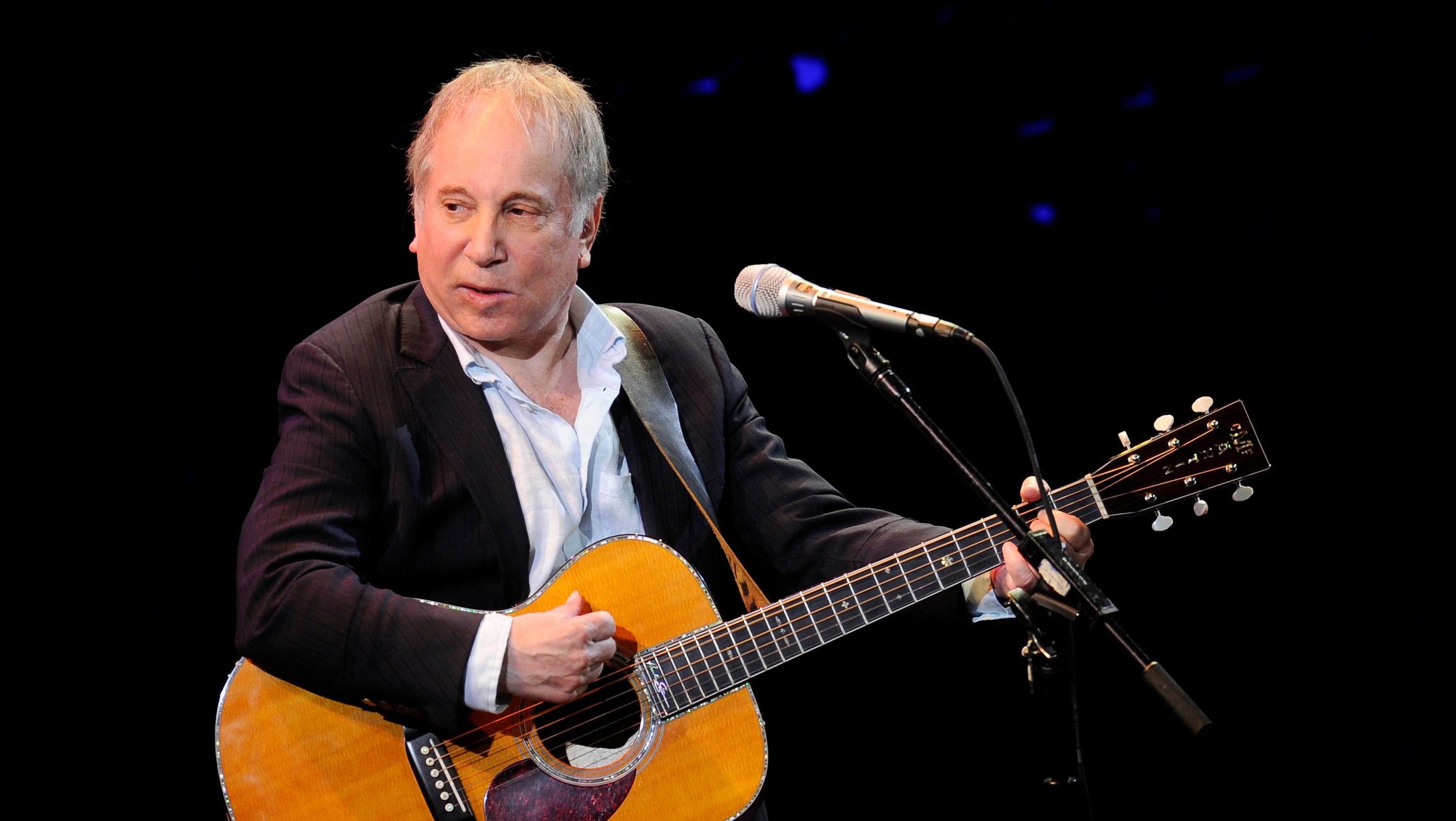Home>Production & Technology>Composer>Which Composer Wrote The First Great Opera?


Composer
Which Composer Wrote The First Great Opera?
Modified: January 22, 2024
Discover the first great opera composer and explore their timeless contributions to the world of music.
(Many of the links in this article redirect to a specific reviewed product. Your purchase of these products through affiliate links helps to generate commission for AudioLover.com, at no extra cost. Learn more)
Table of Contents
Introduction
Opera, a grand art form that combines music, drama, and spectacle, has a rich history dating back several centuries. Many composers have contributed to the evolution and development of opera, but there is one composer who stands out as the pioneer of this magnificent genre. Claudio Monteverdi, an Italian composer of the late 16th and early 17th centuries, is often hailed as the “father of opera.”
In this article, we will delve into the origins of opera and explore Monteverdi’s pivotal role in its evolution. We will focus specifically on his groundbreaking work, “L’Orfeo,” which is widely regarded as the first great opera ever composed.
Through examining the plot, characters, musical style, and impact of “L’Orfeo,” we will gain a deeper understanding of how Monteverdi revolutionized the operatic form and set the stage for future composers to follow.
So, join us on this journey through the history of opera and discover the fascinating story behind the composer who wrote the first great opera.
Origins of Opera
To understand the significance of Monteverdi’s contributions to opera, we must first explore the origins of this captivating art form. Opera emerged in Italy during the late Renaissance period, around the late 16th century.
The Renaissance was a time of great cultural and artistic revival, and the desire to bring together various art forms led to the birth of opera. The earliest forms of opera were influenced by ancient Greek tragedies and the musical recitatives of the time.
Opera was initially performed in small private gatherings, where nobles and intellectuals would come together to appreciate the combination of music and theater. These early operas were often based on mythological or historical subjects and featured solo singers accompanied by a small ensemble of instruments.
One key factor in the development of opera was the invention of opera houses, dedicated venues where opera performances took place. The first opera house, the Teatro San Cassiano, opened in Venice in 1637. This marked a turning point in the accessibility of opera, as it made it possible for a larger audience to experience these theatrical productions.
As opera gained popularity, it began to evolve into a more sophisticated and elaborate art form. Composers started experimenting with complex vocal techniques, intricate orchestrations, and elaborate stage designs. The Baroque era, which followed the Renaissance, brought about significant changes in the style and structure of opera.
With this foundation laid, we can now explore the era in which Claudio Monteverdi emerged as a groundbreaking composer, pushing the boundaries of what opera could be.
Emergence of the Baroque Era
The Baroque era, spanning roughly from the early 17th century to the mid-18th century, was a time of tremendous artistic innovation and complexity. This period marked a shift in the artistic mindset, emphasizing grandeur, ornamentation, and emotional expression.
In the realm of music, the Baroque era saw the flourishing of new compositional styles and forms, including the development of opera. The rise of the opera genre during this time was closely tied to the social and cultural developments of the era.
One of the defining characteristics of Baroque opera was the emphasis on dramatic storytelling. Composers sought to convey intense emotions and create a sense of theatricality through music and performance. The use of elaborate sets, costumes, and staged spectacles became common in Baroque opera productions.
Furthermore, the role of the orchestra in opera grew significantly during the Baroque era. Composers expanded the use of instrumental accompaniments, creating rich and textured musical landscapes that heightened the dramatic impact of the performances.
It is in this artistic climate that Claudio Monteverdi made his mark, revolutionizing the world of opera with his daring and innovative compositions.
Monteverdi’s works, including his landmark opera “L’Orfeo,” showcased a departure from the traditional style of polyphonic choral music that dominated the Renaissance period. He introduced a more expressive and emotionally charged musical language, characterized by recitatives, a form of musical declamation closely resembling speech.
Monteverdi’s contributions to opera composition during the Baroque era laid the groundwork for future composers to build upon and refine. His daring experimentation with harmony, use of dissonance, and manipulation of vocal lines pushed the boundaries of what was considered acceptable in musical composition of the time.
With the emergence of the Baroque era, the stage was set for the birth of the first great opera masterpiece – “L’Orfeo” by Claudio Monteverdi.
Claudio Monteverdi: A Musical Innovator
Claudio Monteverdi, born in 1567 in Cremona, Italy, was a visionary composer who played a pivotal role in the evolution of opera. He is considered one of the most significant composers of the late Renaissance and early Baroque periods.
Monteverdi’s approach to music was groundbreaking, as he disregarded traditional compositional rules and sought to convey emotions and dramatic intensity through his works. His bold musical innovations laid the foundation for the development of opera as a distinct genre.
One of Monteverdi’s major contributions to music was his development of the new dramatic style known as the ‘seconda pratica’ or ‘stile moderno.’ While the Renaissance style focused on the polyphonic harmony of equal voices, Monteverdi’s ‘stile moderno’ emphasized the primacy of the melody and the expressiveness of the text.
Monteverdi’s commitment to musical drama and emotional expression is evident in his use of contrasting musical textures, intense harmonies, and dissonance. He employed innovative techniques such as word-painting, where the music reflects the meaning of the text, effectively conveying the emotions and actions of the characters.
In addition to his compositional techniques, Monteverdi’s contributions as a conductor and performer were also remarkable. He served as the maestro di cappella at the Basilica of San Marco in Venice, where he had the opportunity to experiment with new choral and instrumental combinations.
As a musical innovator, Monteverdi was not afraid to push the boundaries of convention. His willingness to blend different musical styles and experiment with new forms elevated his compositions to new heights of artistic expression.
Monteverdi’s ingenuity and artistic daring set the stage for his magnum opus, “L’Orfeo,” which not only solidified his reputation as a master composer but also ushered in a new era for opera.
Monteverdi’s “L’Orfeo”: The First Great Opera
Of all the works composed by Claudio Monteverdi, his opera “L’Orfeo” stands as a monumental achievement and is widely regarded as the first great opera ever written. First performed in Mantua in 1607, “L’Orfeo” revolutionized the operatic form, showcasing Monteverdi’s innovative approach to music and storytelling.
The opera tells the story of Orpheus, the legendary musician of Greek mythology, and his quest to rescue his beloved wife Eurydice from the Underworld. Monteverdi’s masterful composition brings this timeless tale to life and captures the depths of human emotion in a way that had never been done before.
One of the most striking aspects of “L’Orfeo” is Monteverdi’s use of recitative, a sung form of dialogue that heightens the dramatic impact of the story. Through recitative, the characters express their thoughts, emotions, and interactions, creating a sense of immediacy and intimacy.
In addition to recitative, Monteverdi included arias and choral pieces that showcased his mastery of melody and vocal composition. These musical interludes provide moments of reflection, introspection, and heightened drama, adding layers of depth to the narrative.
Furthermore, Monteverdi’s orchestration in “L’Orfeo” was innovative for its time. He employed a diverse range of instruments, including strings, brass, woodwinds, and percussion, to create a rich and dynamic sound palette. This orchestral brilliance, combined with the expressive vocal lines, ensures that the music remains captivating and emotionally resonant throughout the opera.
The libretto, or the text of the opera, also played a crucial role in the success of “L’Orfeo.” Monteverdi collaborated with librettist Alessandro Striggio to craft a story that captured the essence of Orpheus’ journey, exploring themes of love, loss, and the power of music. The libretto masterfully intertwines poetry and narrative, enhancing the emotional impact of the opera.
The premiere of “L’Orfeo” was a resounding success, establishing Monteverdi as a leading figure in the world of opera. Its popularity spread quickly throughout Italy and beyond, inspiring subsequent generations of composers to explore and expand upon the operatic form.
Monteverdi’s “L’Orfeo” remains a testament to his musical genius and foresight. Through this monumental work, he set the stage for the future development of opera, shaping the course of musical history and leaving an enduring legacy.
The Plot and Characters of “L’Orfeo”
“L’Orfeo” by Claudio Monteverdi features a compelling plot based on the ancient Greek myth of Orpheus, the legendary musician who descends into the Underworld in an attempt to bring his beloved wife Eurydice back to life. The opera takes the audience on a profound journey through love, loss, and the power of music.
The story begins with Orfeo, a gifted musician, celebrating his wedding to Eurydice. However, their happiness is short-lived as tragedy strikes, and Eurydice dies from a snakebite. Overwhelmed by grief, Orfeo is determined to rescue his beloved from the clutches of death.
Guided by the mythological figure of Hope, Orfeo embarks on a treacherous journey to the Underworld, where he is granted permission to plead his case to the gods and the Furies. Through the beauty and power of his music, Orfeo softens the hearts of the gods and convinces them to grant him Eurydice’s release.
However, there is a condition. Orfeo must lead Eurydice out of the Underworld without looking back at her until they reach the world of the living. Overcome with doubt and fear, Orfeo succumbs to temptation and turns around to ensure Eurydice is still following him. In that moment, Eurydice vanishes, descending back into the Underworld.
Devastated by his loss, Orfeo mourns and laments the cruel fate that has befallen him. The gods, moved by his profound grief, take pity and offer solace. They allow his soul to ascend to the heavens and join Eurydice for eternity.
The characters in “L’Orfeo” are richly portrayed, each representing different facets of human emotion. Orfeo himself is the embodiment of the power of music and its ability to convey deep emotions. His voice carries the weight of his love, grief, and determination throughout the opera.
Eurydice, though her role is brief, embodies the pure and tragic nature of love. She represents the tender and ephemeral beauty that is lost too soon.
Other notable characters include the messenger, who brings news of Eurydice’s death to Orfeo, and the various gods and mythological figures who inhabit the Underworld and interact with Orfeo throughout his journey.
Through these vividly portrayed characters and the emotionally charged plot, Monteverdi creates a timeless opera that resonates with audiences to this day. “L’Orfeo” serves as a testament to the enduring power of music and the depths of human emotion.
Musical Style and Techniques in “L’Orfeo”
Claudio Monteverdi’s opera, “L’Orfeo,” showcases a unique musical style infused with innovative techniques that revolutionized the operatic form. Through his masterful composition, Monteverdi created a musical landscape that perfectly complements the emotional depth and dramatic intensity of the storyline.
One of the standout features of the musical style in “L’Orfeo” is the use of recitative, a vocal style that bridges the gap between speaking and singing. Recitative allows for a more naturalistic and expressive delivery of the text, allowing the characters to communicate their emotions and advance the plot in a conversational and dramatic manner.
Monteverdi’s recitatives in “L’Orfeo” are characterized by their flexible rhythms and melodic freedom. They follow the natural inflections of the Italian language, mirroring the rhythm and accents of speech. This style of recitative became a hallmark of Monteverdi’s work and influenced future composers in the development of the operatic form.
In addition to recitative, Monteverdi incorporated arias into “L’Orfeo.” These are more structured and melodic passages, providing moments of introspection, contemplation, and emotional release for the characters. Arias allow for the exploration of individual emotions and thoughts, often expressing the depths of sorrow, longing, or joy.
Monteverdi’s musical style in “L’Orfeo” is characterized by a rich harmonic language that reflects the emotional intensity of the story. He employs dissonance and chromaticism to convey tension, sorrow, and despair. These harmonic choices add depth and complexity to the music, evoking powerful emotional responses from the audience.
The orchestration in “L’Orfeo” is another notable aspect of Monteverdi’s musical style. He utilizes a wide array of instruments to create a diverse and vibrant sound palette. The orchestra consists of string instruments, such as violins, violas, and cellos, as well as brass, woodwinds, and percussion. Monteverdi skillfully weaves these instruments together to enhance the drama and evoke different moods throughout the opera.
Monteverdi’s use of musical techniques, such as word-painting, also adds depth and meaning to the storytelling in “L’Orfeo.” Word-painting involves using musical elements to illustrate the meaning of the text. For example, when Orfeo sings of his sorrow, the music may descend in a mournful melody. This technique enhances the emotional impact of the opera and creates a deeper connection between the music and the audience.
Through his inventive use of recitative, expressive arias, rich harmonies, dynamic orchestration, and meaningful word-painting, Monteverdi forged a musical style in “L’Orfeo” that set a new standard for opera composition. His innovative techniques remain influential and continue to inspire composers to this day.
Impact and Legacy of “L’Orfeo”
The impact of Claudio Monteverdi’s opera, “L’Orfeo,” cannot be overstated. This groundbreaking work not only solidified Monteverdi’s reputation as a visionary composer but also left a lasting legacy that continues to influence the world of opera.
“L’Orfeo” was a significant departure from the musical norms of its time. Monteverdi’s innovative use of recitative, expressive arias, and harmonic language breathed new life into the operatic form. The emotional depth and dramatic intensity of “L’Orfeo” captivated audiences and elevated opera to a new level of expressive power.
The success of “L’Orfeo” quickly spread throughout Italy and beyond. The opera’s popularity paved the way for the establishment of opera as a legitimate art form, sparking a flourishing of operatic composition and performance in the Baroque era and beyond.
Monteverdi’s musical techniques in “L’Orfeo” influenced countless composers who followed in his footsteps. His use of recitative as a vehicle for dramatic storytelling became a standard feature of operatic composition, setting a new precedent for the integration of music and theater.
Furthermore, Monteverdi’s experimentation with dissonance, harmonic complexity, and orchestration marked a dramatic shift in musical language, inspiring future generations of composers to explore new sonic possibilities.
“L’Orfeo” also played a significant role in the development of opera as a theatrical spectacle. Monteverdi’s use of elaborate sets, richly designed costumes, and staged spectacles set a precedent for the visual and theatrical elements that became integral to operatic productions in the centuries that followed.
The enduring legacy of “L’Orfeo” can be seen in its continued performance and appreciation in modern times. The opera remains a staple of the operatic repertoire, captivating audiences with its timeless storyline and powerful musical expression.
Monteverdi’s innovative approach to opera composition paved the way for future composers to push the boundaries of the genre, creating evermore emotionally charged and dramatically engaging works. His influence can be seen in the works of composers such as Handel, Mozart, Wagner, and beyond.
In addition to its musical and artistic impact, “L’Orfeo” holds historical significance as the first great opera ever composed. It represents a landmark moment in the evolution of music and theater, a pivotal turning point that forever transformed the landscape of operatic art.
Through its innovative musical style, compelling storytelling, and enduring influence, “L’Orfeo” stands as a testament to Monteverdi’s genius and marks a timeless milestone in the history of opera.
Conclusion
Claudio Monteverdi’s opera, “L’Orfeo,” marked a turning point in the history of music and opera. Through his innovative musical style and dramatic storytelling, Monteverdi reshaped the operatic form, setting the stage for future generations of composers to explore new artistic possibilities.
“L’Orfeo” not only showcased Monteverdi’s musical genius but also left a profound impact on the world of opera. His use of recitative, expressive arias, harmonic language, and intricate orchestration transformed opera into a powerful medium of emotional expression.
The legacy of “L’Orfeo” extends beyond its initial success. The opera’s influence can be seen in the works of countless composers who followed, embracing Monteverdi’s dramatic and innovative approach to composition.
Furthermore, “L’Orfeo” paved the way for the development of opera as a full-fledged art form, incorporating visual spectacle, elaborate sets, and theatrical elements into the performances. Monteverdi’s opera set the standard for the integration of music and theater that continues to captivate audiences today.
Moreover, “L’Orfeo” holds historical significance as the first great opera ever composed. It stands as a milestone in the evolution of music, a testament to the transformative power of artistic innovation.
As we reflect on the legacy of “L’Orfeo,” we recognize the lasting impact of Monteverdi’s contributions. His daring experimentation, musical brilliance, and profound understanding of human emotions continue to resonate with audiences and inspire generations of musicians and composers.
So, the next time you enter a grand opera house and witness the fusion of music, drama, and spectacle, remember the pioneering spirit of Claudio Monteverdi and his groundbreaking opera, “L’Orfeo,” the timeless masterpiece that changed the course of musical history forever.











